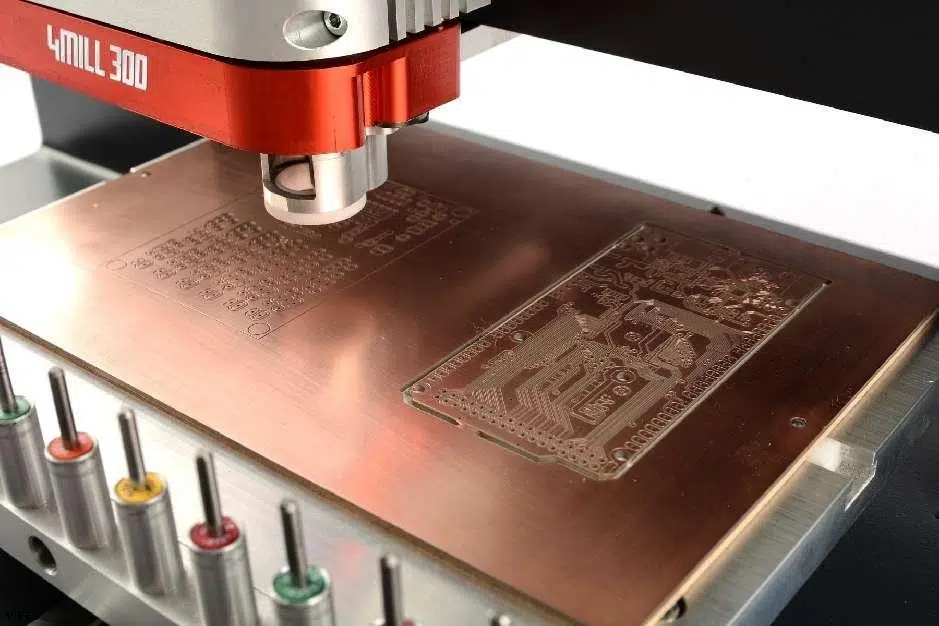Milling PCB boards has become a critical technique in the design and production of printed circuit boards in modern electronics manufacturing. This process ensures not only precision in machining but also enhances production efficiency, particularly when dealing with the complexity of multilayer circuit boards. In this article, we will explore in detail the core role, technical principles, and future prospects of Milling Printed Circuit Board in the electronics manufacturing industry.
First, Milling PCB boards is a CNC (Computer Numerical Control) based process where precise mechanical cutting removes excess material from the PCB. The major advantage of this technique is that it does not rely on chemical etching to process the boards, but instead, it carves out the required circuits and shapes mechanically. Compared to traditional etching processes, milling offers greater accuracy and control, especially in complex designs.Milling Printed Circuit Board also significantly shortens the production cycle. Traditional etching requires multiple chemical steps, and it often leads to waste material and pollution. In contrast, milling uses mechanical methods to remove materials in one go, reducing the complexity of the process and improving production efficiency. For products and devices that require a quick turnaround to market, the time saved with milling is a considerable competitive advantage.

Milling PCB boards
What’s more, Milling PCB boards has become well-recognized for its flexibility during the design phase. Designers and engineers can make real-time adjustments to their designs during the production process. With the help of CNC systems, modifications to circuit shapes and structures can be implemented swiftly. This flexibility is critical for modern electronics products that are increasingly smaller and multifunctional. Especially in industries like smartphones and wearable tech, milling provides the capability to handle intricate designs and layouts effectively.Another area where Milling Printed Circuit Board shines is in multilayer PCB production. Multilayer boards often consist of various materials such as FR4, ceramics, and other substrates, each with different mechanical properties. Milling allows precise cutting between these materials, ensuring the accuracy and integrity of each layer. This prevents issues like short circuits or breaks between the layers that can arise with traditional methods.
In addition to precision and flexibility, Milling Printed Circuit Board plays a significant role in shaping the overall form factor of PCBs. In today’s electronics, product design is not just about the internal circuitry; the exterior design and structural layout are equally important. Devices like wearable technology and smartphones often have unique shapes that need to be accommodated without compromising the internal electronics. Milling allows for the accurate cutting of complex shapes and helps to integrate the PCB seamlessly into the product’s design without affecting circuit stability.In multilayer PCB manufacturing, Milling Printed Circuit Board is especially crucial. Multilayer boards often involve multiple different materials, such as FR4 and ceramics, each with unique mechanical processing characteristics. Milling helps make precise cuts between these materials, ensuring the accuracy of each layer and preventing issues like short circuits between layers.
Additionally, Milling PCB boards is instrumental in shaping the physical form of PCBs. Many modern electronic products require not only complex circuit designs but also unique shapes to fit the product structure. The milling process can accurately cut intricate shapes, providing more room for product design innovation.One of the key advantages of Milling Printed Circuit Board over traditional methods is its environmentally friendly nature. Since no harmful chemicals are required, it significantly reduces the amount of waste and pollutants generated during the manufacturing process. Additionally, by optimizing the use of materials, milling technology greatly minimizes production waste, which is especially important for companies that prioritize sustainability.As the industry continues to advance with the rise of 5G, IoT, and autonomous driving technologies, the complexity of PCB design is expected to grow. Higher levels of integration will be required, and Milling Printed Circuit Board will play an even more critical role in meeting these demands. With continuous improvements in CNC technology and more efficient mechanical systems, milling can not only meet the requirements of complex circuit board manufacturing but also offer faster production times and higher yields.
In conclusion, Milling PCB boards is a key technology in PCB manufacturing, providing both accuracy and efficiency while offering enhanced flexibility in design. As the electronics industry continues to evolve, milling technology will become an even more integral part of circuit board production, driving innovation and setting new standards for the future.